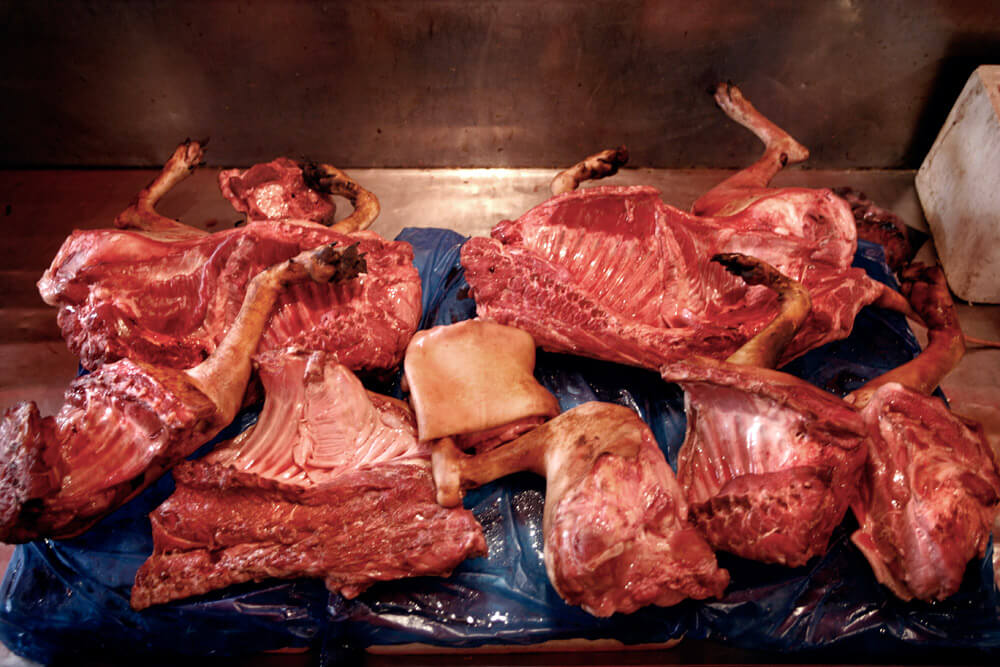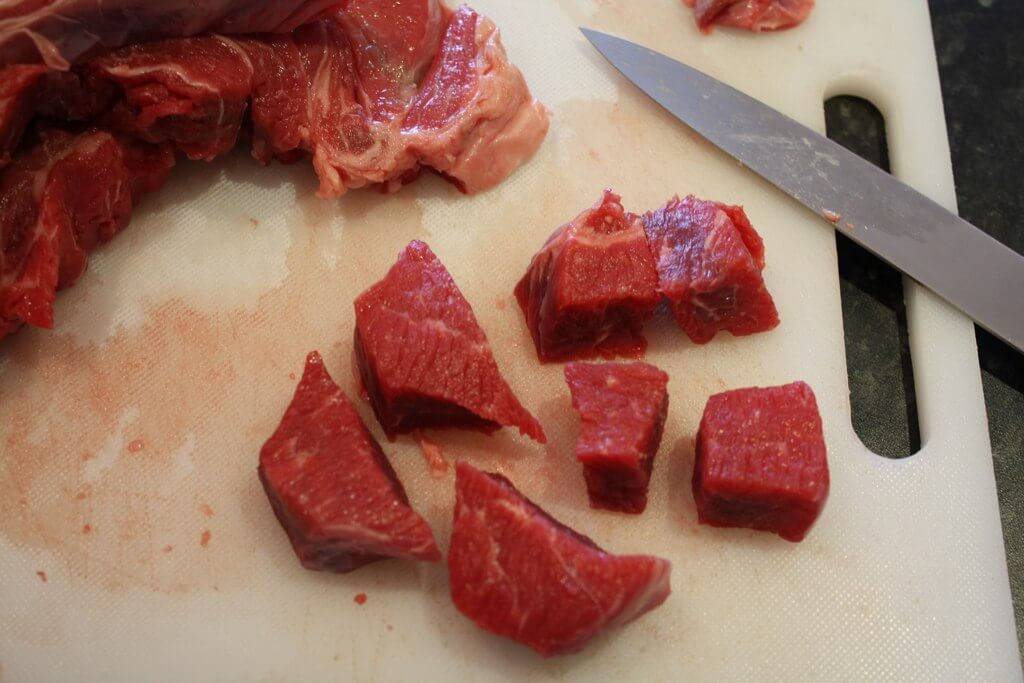What is The Best Meat for Dog Food
Meat is crucial for your dog’s diet, providing essential nutrients. Many pet owners ponder the best meat for dog food, as meat is a primary source of protein that helps maintain muscle mass, support energy levels, and ensure overall health. Dogs are omnivores but thrive on a diet rich in high-quality animal proteins, vital for their growth and well-being.
This guide aims to answer the question, “What is the best meat for dog food,” by examining various types of meat and their benefits. By understanding which meats are most suitable for you, you can make wise choices for your canine to improve their diet.
We’ll delve into the characteristics of different meats, explore their nutritional value, and provide tips on selecting the best options to meet your dog’s dietary needs. Whether you’re choosing dog food or preparing meals at home, this guide will help you ensure that your furry friend gets the best possible nutrition.
Understanding Your Dog’s Nutritional Needs

Protein’s Function in a Dog’s Diet: Protein is vital to a dog’s diet. It is essential for growth, energy, and muscle maintenance. Dogs require protein, including muscles and organs, to grow and heal their tissues.
Your dog may experience poor growth, weakness, and fatigue without enough protein. High-quality protein sources like meat provide the amino acids necessary to support your dog’s overall health and vitality.
Essential Nutrients from Meat
Not only is meat a fantastic source of protein, but it also provides a variety of vital elements. Among them are amino acids, the fundamental protein components crucial for muscle development and repair. Important vitamins and minerals in meat include Iron and B for healthy blood and vitality.
Additionally, meat contains zinc and selenium, which support a strong immune system and overall well-being. Including high-quality meat in your dog’s diet ensures they receive these vital nutrients, helping them stay healthy and energetic.
Key Factors in Choosing Meat for Dog Food

Quality of Meat
When selecting meat for dog food, it’s crucial to consider the quality of meat. High-quality meats come from reputable sources and are rich in essential nutrients without fillers or artificial additives. They often include fresh or frozen meats and meat meals that retain nutritional value. On the other hand, low-quality meats may include by-products or meals that are less nutritious and could contain fillers or preservatives. Choosing high-quality meat ensures your dog gets better nutrition, leading to improved health and vitality.
Meat Sources
Understanding the different meat sources used in dog food is also important. Common types of meat include chicken, beef, lamb, and fish. Each type of meat offers unique benefits:
- Chicken is a lean protein.
- Beef is rich in iron.
- Lamb is good for dogs with sensitivities.
- Fish provides omega fatty acids for healthy skin and coat. It’s
It is essential to choose dog foods with named meat sources (like “chicken” or “beef”) rather than generic terms (like “meat by-products”) to ensure your dog is getting quality protein.
Types of Meat in Dog Food
When choosing the best meat for your dog’s food, it’s crucial to understand the different types of meat and their specific benefits. Here’s a detailed look at the most common types of meat used in dog food:
Chicken
Nutritional Benefits: Chicken is widely recognized for its high protein content, which is necessary for the growth of muscles and maintenance. Additionally, chicken is low in fat, which helps manage your dog’s weight while providing sustained energy. This makes it an excellent option for maintaining a lean physique.
Suitability for Dogs: Chicken is generally well-tolerated by most dogs, including those with food sensitivities or mild allergies. Its digestibility makes it a suitable choice for dogs with sensitive stomachs. However, always monitor your dog for any signs of an adverse reaction, especially if it’s a new addition to their diet.
Beef
Nutritional Benefits: Beef is rich in iron, which enhances blood oxygen delivery and aids in preventing anemia. It also contains vitamin B12, essential for red blood cell formation and nerve function. This makes beef a valuable ingredient for dogs needing extra energy and muscle support.
Suitability for Dogs: Beef is ideal for active dogs who require higher energy levels and robust muscle support. However, some dogs might experience allergies or sensitivity issues to beef, so it’s important to observe your dog’s reaction when introducing beef into their diet. Switching to a different protein source may be best if signs of allergies appear.
Lamb
Nutritional Benefits: Lamb offers high protein content and is a common choice for hypoallergenic dog foods. It contains essential nutrients and amino acids that support muscle growth and overall health. The rich nutritional profile makes it a beneficial option for dogs with specific dietary needs.
Suitability for Dogs: Lamb is particularly useful for dogs with food sensitivities or allergies. In contrast to more popular proteins like beef or chicken, it is less likely to trigger allergic reactions, making it a good option for dogs with a history of food-related issues.
Fish
Nutritional Benefits: Fish is a fantastic source of mega-3 fatty acids, which are essential for maintaining skin and coat health. These fatty acids also have anti-inflammatory properties, supporting joint health and overall well-being. Fish provides a range of nutrients that promote a healthy immune system and shiny coat.
Suitability for Dogs: Fish is beneficial because it is less likely to trigger allergies and adverse reactions in dogs. It’s also a good option for dogs needing joint support due to the anti-inflammatory effects of omega-3 fatty acids. Regular fish meals can contribute to overall health and vitality.
Turkey
Nutritional Benefits: Turkey is a lean protein with a lower fat content than other meats. It offers a significant supply of vital nutrients and is suitable for maintaining a healthy weight without excessive calories.
Suitability for Dogs: Turkey is an excellent alternative to chicken, particularly for dogs with allergies to more common proteins. It is well-tolerated by many dogs and offers a well-balanced supply of vital nutrients and protein. It can be used as a regular protein source or as a novel protein in hypoallergenic diets.
Pork
Nutritional Benefits: Pork is high in protein and offers several vital nutrients, such as vitamins and minerals, that support overall health. It is also a rich energy source that helps build muscle and repair.
Suitability for Dogs: While pork can be a nutritious option, it may not suit all dogs. Some dogs might have sensitivities or allergies to pork, so it’s important to introduce it gradually and monitor for any adverse reactions. Pork should be considered part of a varied diet, not a sole protein source.
Understanding the different types of meat and their advantages can assist you in making wise choices when selecting dog food. Each meat type has unique nutritional properties and potential benefits, so choosing one that best meets your dog’s specific health needs and dietary requirements is essential.
How to Evaluate Meat Quality in Dog Food

Evaluating meat quality is crucial when choosing the best meat for your dog’s food. Here’s how you can assess the meat quality in dog food:
Ingredients List
What to Look For: Start by checking the list of ingredients on the dog food container. A particular kind of beef should be the initial ingredient, like chicken, beef, or lamb, rather than a generic term like “meat” or “animal by-product.” High-quality dog foods list meat as the primary ingredient, indicating it’s a significant part of the recipe. Avoid products with vague terms or low-quality fillers like corn or wheat, which do not contribute to your dog’s nutritional needs.
Meat Meal vs. Whole Meat
Differences and Why Whole Meat is Preferred: Meat meal is a concentrated form of meat where most moisture is removed, making it a dense protein source. However, whole meat is generally preferred because it retains natural moisture and contains a broader range of nutrients. Whole meats also provide better digestibility and flavor, making them a more wholesome choice for your dog’s diet. While meat meals can be beneficial, look for products where whole meat is listed first, which indicates higher quality and better nutritional value.
Ethical and Sourcing Considerations
Importance of Responsibly Sourced Meat: Consider the ethical and sourcing practices of the meat used in dog food. Responsibly sourced meat comes from suppliers that adhere to strict guidelines for environmental and animal welfare impact. Choosing dog food brands that prioritize sustainable practices and ethical treatment of animals ensures that the meat used is high quality and obtained in a way that is respectful to both animals and the environment. Look for brands that provide transparency about their sourcing practices.
By carefully evaluating these aspects, you can ensure that the meat in your dog’s food is high-quality, nutritious, and ethically sourced, providing the best possible diet for your furry friend.
Popular Dog Food Brands and Their Meat Choices
When choosing the best meat for your dog’s food, several brands stand out for their high-quality ingredients. Here’s a look at some popular dog food brands and their meat choices:
Brand Comparisons
Blue Buffalo: Blue Buffalo is known for its premium components, of which real meat is the primary component. It offers a range of options, including chicken, beef, and lamb. Its formulas are enriched with omega fatty acids and antioxidants to support overall health. Blue Buffalo avoids artificial additives, making it a good choice for many dogs.
Wellness CORE: Wellness CORE focuses on high-protein diets with meat as the primary ingredient. It uses sources like turkey, chicken, and fish. Its recipes are designed to be grain-free, which can benefit dogs with sensitivities. Wellness CORE also includes added probiotics for digestive health.
Orijen: Orijen is renowned for its biologically appropriate formulas, meaning it uses ingredients that mimic what dogs eat in the wild. Its dog food features a variety of meats, such as free-run chicken, wild-caught fish, and grass-fed lamb. Orijen emphasizes whole-prey ratios, including organs and cartilage, for balanced nutrition.
Pros and Cons
Blue Buffalo
Pros:
- Uses real meat as the first ingredient.
- Includes omega fatty acids and antioxidants.
- Free from artificial additives.
Cons:
- It could cost more when compared to some other brands.
- Some formulas may be high in fat.
Wellness CORE
Pros:
- High in protein with quality meat sources.
- Grain-free recipes can be ideal for sensitive dogs.
- Includes probiotics for digestive support.
Cons:
- Increased protein intake might not be ideal for all dogs.
- It can be pricey.
Orijen
Pros:
- Features a variety of high-quality meats.
- Biologically appropriate with whole prey ratios.
- Rich in vital minerals and high in protein.
Cons:
- Generally, it is the most expensive among these brands.
- Some dogs may not need such high protein levels.
These brands are well-regarded for their commitment to high-quality meat and nutritional standards. Each has its strengths, so choosing the right one will depend on your dog’s specific needs and dietary preferences.
Common Misconceptions About Meat in Dog Food
When choosing the best meat for your dog’s food, several common misconceptions can lead to confusion. Let’s clarify these myths:
Myth: All Meat is the Same
Clarifying the Differences Between Meat Types and Sources: Not all meat in dog food is created equal. Quality and source of meat can vary significantly. For example, whole meat from high-quality sources is generally more nutritious than meat meals, which can be less digestible and may include by-products. Fresh meats like chicken or beef provide essential amino acids and better nutrient profiles than processed or inferior-quality meats. Understanding these differences helps you select food that best supports your dog’s health.
Myth: Grain-Free is Always Better
Understanding When Grain-Free Options are Necessary: Grain-free dog foods have become popular but aren’t always the best choice for every dog. Grains like oats and rice can be beneficial and provide fiber and essential nutrients. Grain-free diets are mainly recommended for dogs with specific grain allergies or sensitivity issues. For many dogs, especially those without allergies, a balanced diet that includes grains can be just as healthy and less expensive.
By understanding these misconceptions, you can make more informed choices about the best meat and overall diet for your dog’s needs.
Conclusion
Recap of the Best Meat Options
Best Meat Choices for Dog Food: Top meats include chicken for high protein, beef for iron, lamb for hypoallergenic needs, fish for omega-3s, turkey as an alternative to chicken, and pork for added nutrients.
Final Recommendations
Tips for Choosing High-Quality Meat-Based Dog Food:
- Opt for whole meats over meat meals.
- Check the ingredients list for quality and avoid fillers and artificial additives.
- Make a decision based on your dog’s requirements and sensitivities for optimal health.
FAQs on What is The Best Meat for Dog Food
What is the best type of meat for dog food?
The best type of meat depends on your dog’s specific needs, but chicken, beef, and fish are generally good choices.
Is it better to feed dogs meat meal or whole meat?
Whole meat is preferable as it provides more natural nutrients and less processing.
Can dogs with allergies eat beef?
Some dogs with allergies can eat beef, but it’s best to consult a vet to determine the ideal source of protein for your dog’s needs.

